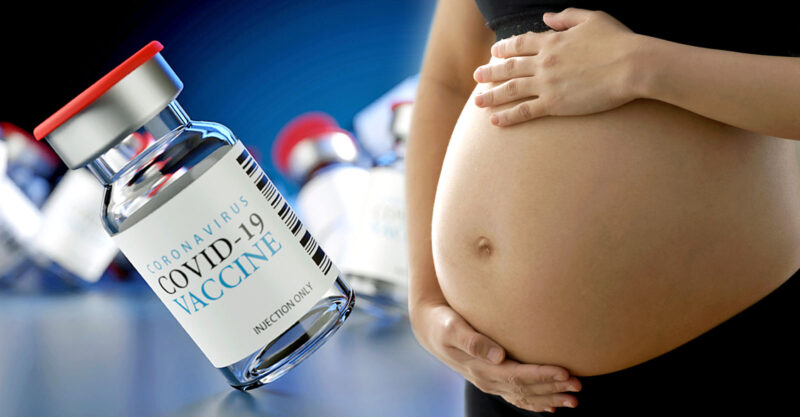Miss a day, miss a lot. Subscribe to The Defender's Top News of the Day. It's free.
The authors of a JAMA Pediatrics study published in October 2023 concluded that maternal mRNA COVID-19 vaccination during pregnancy reduced the risk of newborn severe illness, intensive care admission and death.
However, Harvard biostatistician Dr. Tina Hsieh took issue with the study, writing a brief editorial (with James Cheng-Chung Wei, M.D., Ph.D.), which also appeared in JAMA, that challenged the authors’ conclusions.
Hsieh’s editorial was accompanied by an even shorter response by the study’s authors, led by Sarah Jorgensen, Ph.D., a pharmacist and postdoctoral fellow at the University of Toronto.
The Jorgensen study
The JAMA Pediatrics retrospective study drew data from national health databases on pregnancies in Ontario, Canada, with due dates between May 1, 2021, and Sept. 2, 2022.
The researchers’ objective was to evaluate newborn and early infant health following maternal mRNA COVID-19 vaccination during pregnancy, with endpoints of severe illness, hospitalization or death.
The study included 142,006 infants (51% male) born after an average of 38.7 weeks gestation, which is normal. Of those, 85,670 infants (60%) were exposed to one or more COVID-19 vaccine doses while in utero.
The study reported that infants of vaccinated mothers had a 14% lower risk of severe illness, a 53% lower risk of death and a 14% lower risk of being admitted to intensive care.
Maternal vaccination was associated with a slightly higher risk of hospital readmission up to age 6 months, but this result did not meet statistical significance due, the authors wrote, to “adjusting for confounding” — which means eliminating variables with multiple possible causes or effects that might confuse the relationship under investigation.
For example, the researchers were looking for health outcomes — effects, such as hospitalization — associated with vaccination — cause. A confounder would be something other than the vaccines that caused hospitalization, such as an accident or serious but unrelated diagnosis.
The authors concluded that “not only are there no apparent increased risks of the adverse neonatal and early infant outcomes evaluated in this study following maternal COVID-19 vaccination during pregnancy, but there may be potential benefits.”
The Ontario Ministry of Health and the Canadian Immunization Research Network, which both supported the COVID-19 vaccines, funded the study.
Were vaccinated and unvaccinated study groups comparable?
In clinical studies, treatment and control groups must closely match for characteristics like age, sex and health status. Only the treatment differs.
Jorgenson’s team claimed their control groups matched. However, the vaccinated mothers were more likely to be older than 30, recently vaccinated for influenza, had no previous birth and lived in a higher-income area — all factors that could have influenced their results either way.
In addition, Table 3 from the researchers’ supplemental data showed that vaccination’s “benefits” occurred whether the children were exposed or not: Children of women vaccinated after giving birth benefited equally as those whose mothers got the shot while pregnant.

This could occur only if infants were somehow dosed through breastfeeding, or the groups were already fundamentally different when the study began.
Breastfeeding data were unavailable to the researchers. Even if they’d had the data, not all children are breastfed for the same length of time and fewer than 25% of babies are still breastfed at 6 months. So at best, breastfeeding would have been a minor source of vaccine exposure among these subjects.
One must conclude then, based on exposed and unexposed babies having the same (allegedly positive) outcomes, that vaxed and unvaxed subject groups were not well matched.
More concerning were the 56,336 infants, 21% of those initially enrolled, who were “lost to follow-up,” or unavailable during the trial’s six-month observational period.
Subjects drop out of studies of this type for many reasons, including relocation, ongoing illness, lack of interest or death.
The study’s authors did not discuss the reasons for the high dropout rate, whether dropouts were predominantly from the vaccinated or unvaccinated groups or whether – or if — investigators tried to reach “lost” subjects.
To illustrate the significance of lost-to-follow-up subjects: The study’s eTable 3 lists 40 infant deaths for women who got one vaccine dose and 33 among children of women doubly dosed during pregnancy, for a total of 73 deaths. In the comparison group of unexposed children 91 died, for a difference of 18 deaths.
However, the number lost to follow-up — for whom no outcomes could be determined — was 56,336, a number large enough to have obscured a large number of deaths in either group.
We will never know if this was an issue because Jorgenson’s team did not address these subjects’ vaccination status or reason for dropping out.
Hsieh’s take on the Jorgensen study
Hsieh had four bones to pick with Jorgensen’s study.
First, it did not include race in the analysis but mentioned that women in the vaccinated group tended to be better off, which itself implies racial, economic and health differences.
Second, Hsieh noted that “previous research has indicated that structural racism and the stressors brought about by the COVID-19 pandemic can exacerbate the risk of adverse neonatal outcomes, such as preterm birth.”
On a related point, the study groups were matched for pre-pregnancy health issues but not for pre-pregnancy care, a factor known to affect neonatal outcomes.
Third, while the study groups were controlled for pre-pregnancy health issues no adjustments were made for conditions women developed for the first time during pregnancy, including gestational diabetes, preeclampsia, thyroid disorders, anemia, psychiatric diseases and infections — all of which can impact neonatal outcomes, according to Hsieh.
Finally, the six-month study period may not have allowed sufficient time to capture all significant health signals.
The Jorgensen team’s counter-rebuttal attempted to address each of Hsieh’s concerns.
One of Jorgensen’s co-authors Dr. Jeffrey Kwong noted that although class and race were important in such studies, data was unavailable. Instead, they used a proxy — neighborhood of residence — but did not mention that this factor was uncontrolled and therefore still a serious study weakness.
Jorgensen’s team also used a proxy for pre-pregnancy care — pre-pregnancy health conditions — but disease-specific care, for example treating diabetes, is not the same as overall attention to one’s health.
According to Kwong, the reason his group did not control for illnesses originating during pregnancy was that some of these may have been “on the causal pathway between COVID-19 vaccination and neonatal outcomes.”
In other words, conditions like preeclampsia, one of many pregnancy complications, could have been caused by the vaccine or not and could have been the cause of poor neonatal outcomes — or not.
Kwong ignored Hsieh’s point regarding the length of observation time, stating merely that “we could not adjust for all possible confounders.”









